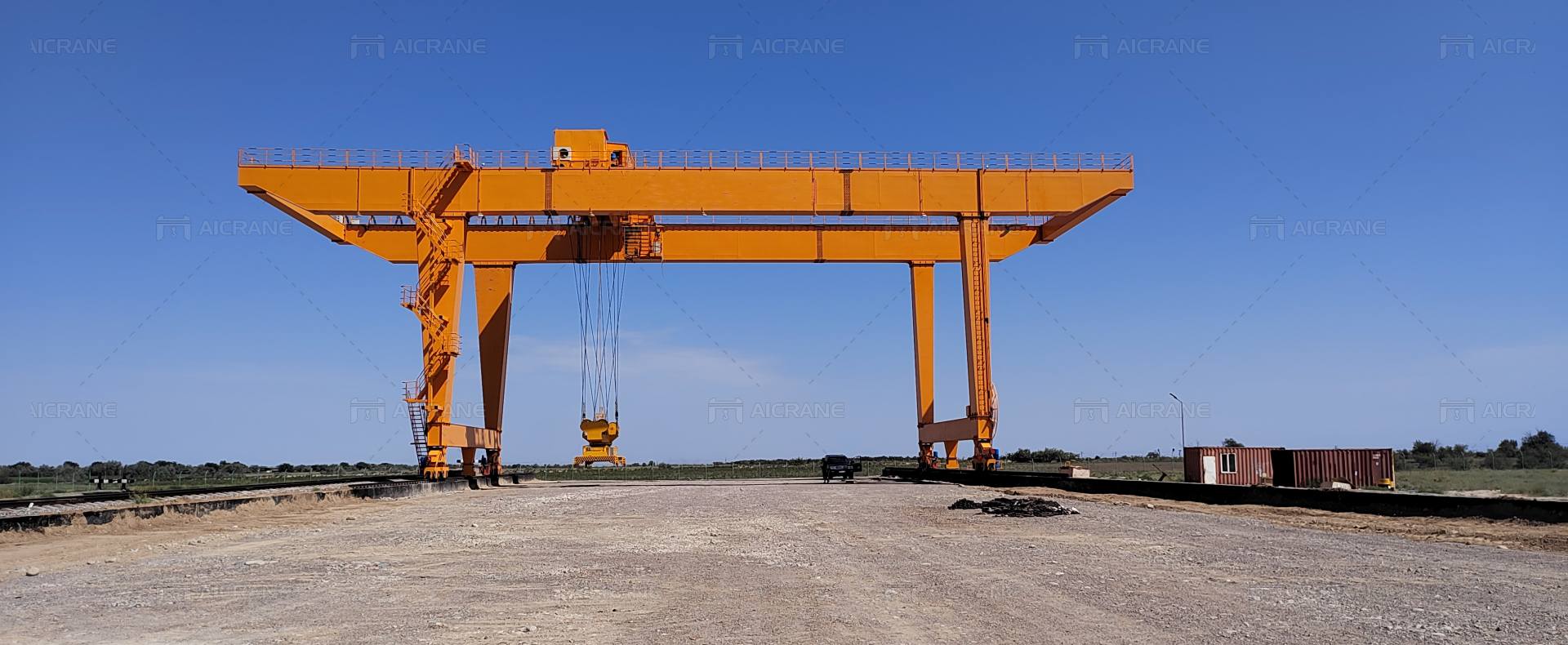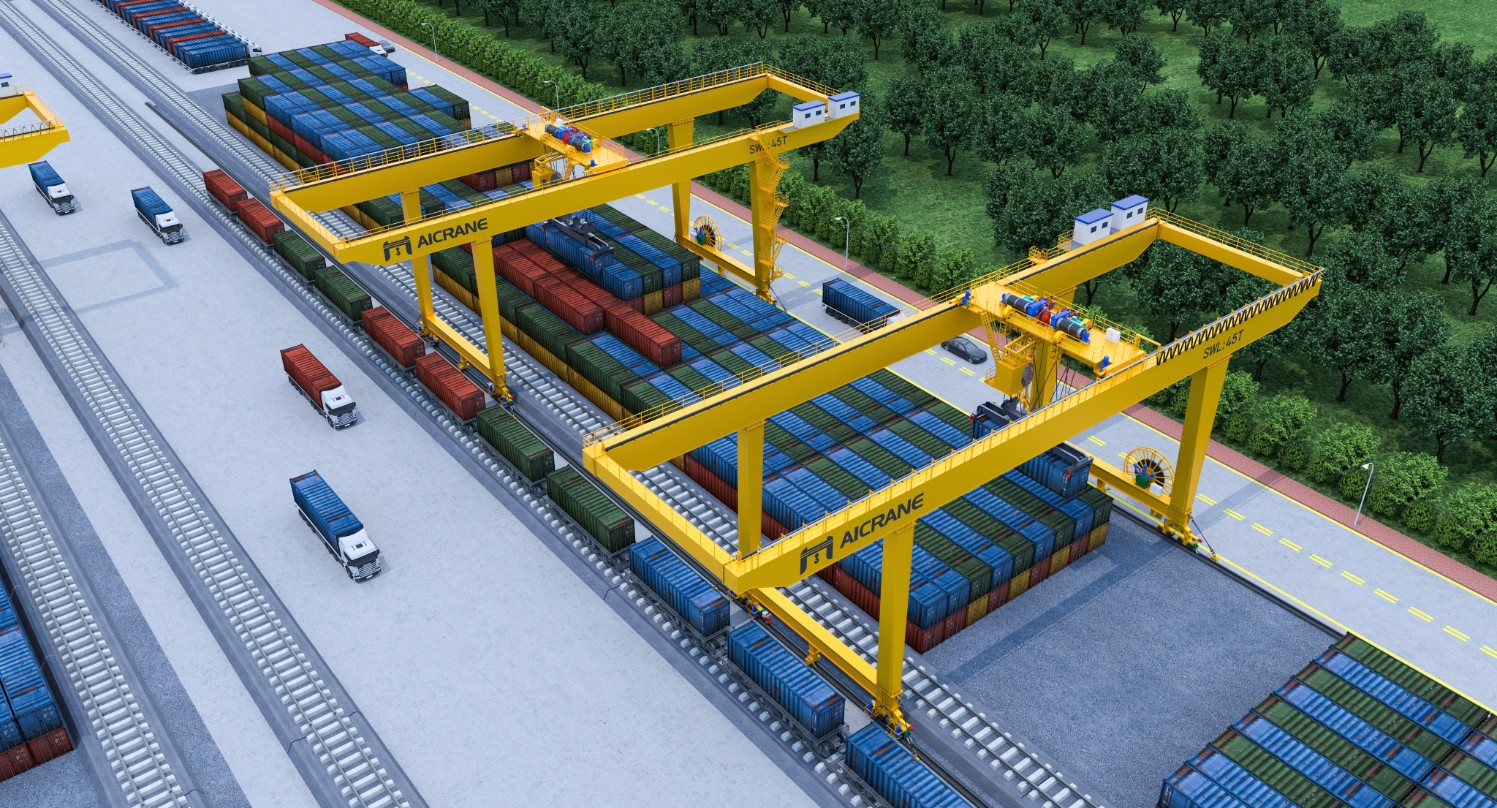In the realm of global logistics, container gantry cranes are indispensable for the efficient handling and transportation of cargo. These towering machines, integral to ports and shipping terminals worldwide, play a critical role in maintaining the smooth flow of goods across the globe.
As the demand for faster and more efficient cargo handling continues to rise, container gantry cranes are evolving to enhance both safety and productivity. This article delves into the significant ways in which these cranes are improving operational safety and boosting productivity in container terminals.

Understanding Container Gantry Cranes
Container gantry cranes, also known as ship-to-shore (STS) cranes, are large, specialized cranes used for loading and unloading containers from ships. They are equipped with a trolley that moves along the main girder, a hoisting mechanism for lifting containers, and spreaders that attach to the containers for secure handling. These cranes are designed to handle heavy loads and operate in harsh maritime environments, making them essential for efficient port operations.
Enhancing Safety in Container Handling
Safety is a paramount concern in container terminals due to the sheer size and weight of the containers being handled, as well as the busy and dynamic nature of port environments. Container gantry cranes are designed with numerous features to mitigate risks and enhance safety:
Advanced Control Systems: Modern container gantry cranes are equipped with advanced control systems that provide precise control over the crane’s movements. These systems include anti-sway technology, which minimizes the swinging of containers during lifting and moving, reducing the risk of accidents.
Automated Operations: Automation in container gantry cranes has significantly improved safety. Automated rail mounted cranes can perform repetitive tasks with high precision and consistency, reducing the likelihood of human error. Automation also allows operators to control cranes remotely, keeping them out of potentially hazardous environments.
Collision Avoidance Systems: Many container gantry cranes are fitted with collision avoidance systems that use sensors and cameras to detect obstacles and other equipment in the crane’s path. These systems can automatically halt the crane’s movement to prevent collisions and accidents.
Load Monitoring Systems: These systems continuously monitor the weight and distribution of the load being lifted, ensuring that the crane operates within safe limits. Overload protection mechanisms automatically stop lifting operations if the load exceeds safe limits.
Emergency Stop Features: Modern cranes are equipped with emergency stop buttons that allow operators to immediately halt all crane operations in case of an emergency, preventing accidents and damage.

Boosting Productivity in Container Terminals
Productivity is a key performance indicator for container terminals, and container gantry cranes are at the heart of efforts to increase throughput and reduce turnaround times. Here’s how these cranes enhance productivity:
Speed and Efficiency: Container gantry cranes are designed to move containers quickly and efficiently from ship to shore and vice versa. Their ability to handle multiple containers simultaneously and their high lifting speeds significantly reduce the time required to load and unload ships.
Increased Lifting Capacity: Modern container gantry cranes are capable of lifting heavier loads and stacking containers higher than older models. This increased capacity allows for more efficient use of space in container yards and reduces the number of movements required.
Precision Handling: The precision of modern control systems allows for accurate placement of containers, reducing the time spent aligning and repositioning loads. This precision also minimizes the risk of damage to containers and cargo.
Automation and Remote Operation: The automation of container gantry crane equipment not only improves safety but also enhances productivity. Automated cranes can operate continuously without fatigue, increasing the number of containers handled per hour. Remote operation capabilities allow for centralized control and coordination, optimizing the use of cranes and other equipment in the terminal.
Integration with Terminal Operating Systems (TOS): Container gantry cranes are increasingly being integrated with advanced TOS, which manage and coordinate all aspects of terminal operations. This integration enables real-time tracking and scheduling of crane movements, optimizing the flow of containers and reducing bottlenecks.
Case Studies and Applications
The implementation of advanced container gantry cranes has yielded significant productivity gains in various ports around the world. For example, the Port of Rotterdam, one of the busiest ports in Europe, has integrated automated container gantry cranes to enhance its operational efficiency. The automation has led to faster turnaround times, allowing the port to handle a larger volume of containers without compromising safety.
Similarly, the Port of Los Angeles has adopted advanced container gantry cranes equipped with remote operation and collision avoidance systems. These innovations have not only improved safety but also increased the port’s capacity to handle mega-ships, thereby boosting its overall productivity.
Container gantry cranes are pivotal to the efficiency and safety of container terminals. The advancements in crane technology, including automation, precision control systems, and safety features, are transforming port operations. By enhancing safety and boosting productivity, modern container gantry cranes are helping ports around the world meet the growing demands of global trade. As technology continues to evolve, the role of these crane machines will become even more critical, driving further innovations and improvements in the logistics industry. For ports looking to enhance their competitiveness, investing in state-of-the-art container gantry cranes is a strategic move that promises substantial long-term benefits.